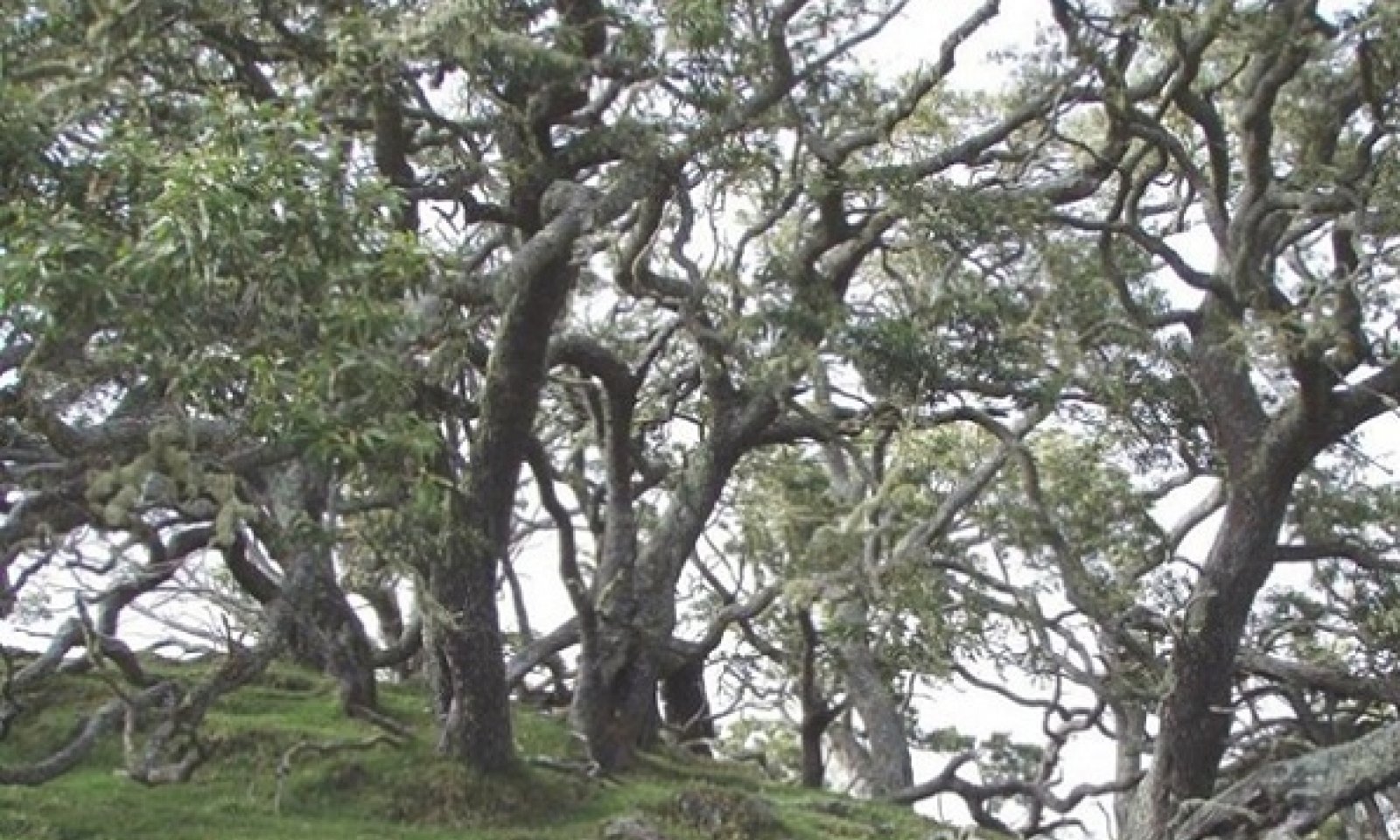
Isomesic-Cool Isothermic Forest
Scenario model
Current ecosystem state
Select a state
Management practices/drivers
Select a transition or restoration pathway
-
Transition T1A
State 1 Reference will transition to State 2 Naturalized Grassland by removing the native understory, either by fire, machinery, or, more gradually, by continuous disturbance by ungulates. Naturalized forage grasses may recruit voluntarily, or be established by sprigging or seeding.
More details -
Restoration pathway R2A
A facsimile of State 1 Reference may be restored directly from State 2 Naturalized Grassland. Weed control must be applied to grassland species and the many opportunistic plant species that invade the site. Weed control will be a perpetual process to maintain the site even after a canopy of native trees and shrubs has developed. All ungulates must be excluded from the restoration site by fences and hunting. Domestic ungulates would be useful to manage vegetation outside the restoration site perimeter. Extensive planting of native species would follow. Koa is the key species for restoration. It can be replanted, and in some cases it can be restored by scarifying the soil with heavy equipment if a sufficient seed bank remains in the soil.
More details
As an overstory canopy develops, the increased shade will cause a shift from warm-season kikuyugrass to cool-season, shade-tolerant meadow ricegrass (Microlaena stipoides). Meadow ricegrass can be almost as dense and detrimental to establishment of native plants as kikuyugrass. It may be possible to partially suppress meadow ricegrass by planting native shrubs that produce denser shade near the ground and litter that covers the grass, although herbicides will be more effective. -
Restoration pathway R2B
State 2 Naturalized Grassland can be restored to State 3 Restored Koa either with the goal of creating stands of harvestable koa, creating a silvopastures, or as an intermediate step to State 1 Reference State. Koa trees can rapidly form a dense stand on these sites from seed bank germination stimulated by mechanical ground scarification, root suckering from remnant koa, and/or replanting. Weed control of unwanted vegetation, including forage grasses, is necessary to reduce competition with tree seedlings. Ungulates must be excluded for at least five to seven years to allow koa saplings to grow large enough to withstand the presence of animals.
More details -
Transition T2A
Gorse (Ulex europaeus) and/or black waddle (Acacia mearnsii) rapidly invades pastures when a seed source is nearby and eventually forms impenetrable thickets with very little understory. Inspection of grasslands for gorse and/or black waddle seedlings, followed by weed control is necessary to prevent this.
More details -
Restoration pathway R3A
State 3 Restored Koa can be restored to State 1 Reference. Weed control will be necessary to eliminate banana poka and other weeds that invade the site, as well as to reduce grass cover. Ungulates must be excluded from the site. Reintroduction of native understory plants is likely be necessary. Very dense stands of koa will benefit from thinning.
More details -
Restoration pathway R4A
It may be possible to restore state 4 Introduced Tree/Shrub-Invaded to State 2 Naturalized Grassland. Multiple weed control treatments are required followed by the removal of dead gorse and/or black waddle. The reestablishment of forage grasses may be necessary. However, gorse and/or black waddle seeds can persist and remain viable in the soil for decades, making continual control necessary.
More details -
No transition or restoration pathway between the selected states has been described
Target ecosystem state
Select a state
State 1
Reference State





Description
This state consists of one community phase. Intact examples of this community phase no longer exist. Most of the forested areas have transitioned to State 2 Naturalized Grassland through mechanical clearing, long-term grazing, browsing, and trampling by ungulates, wood harvesting, competition from introduced plant species, and wildfires. In order to describe an approximation of the Reference State, it was necessary to use information collected from small stands, incomplete plant communities, and similar ecological sites on the island.
Submodel
State 2
Naturalized Grassland State
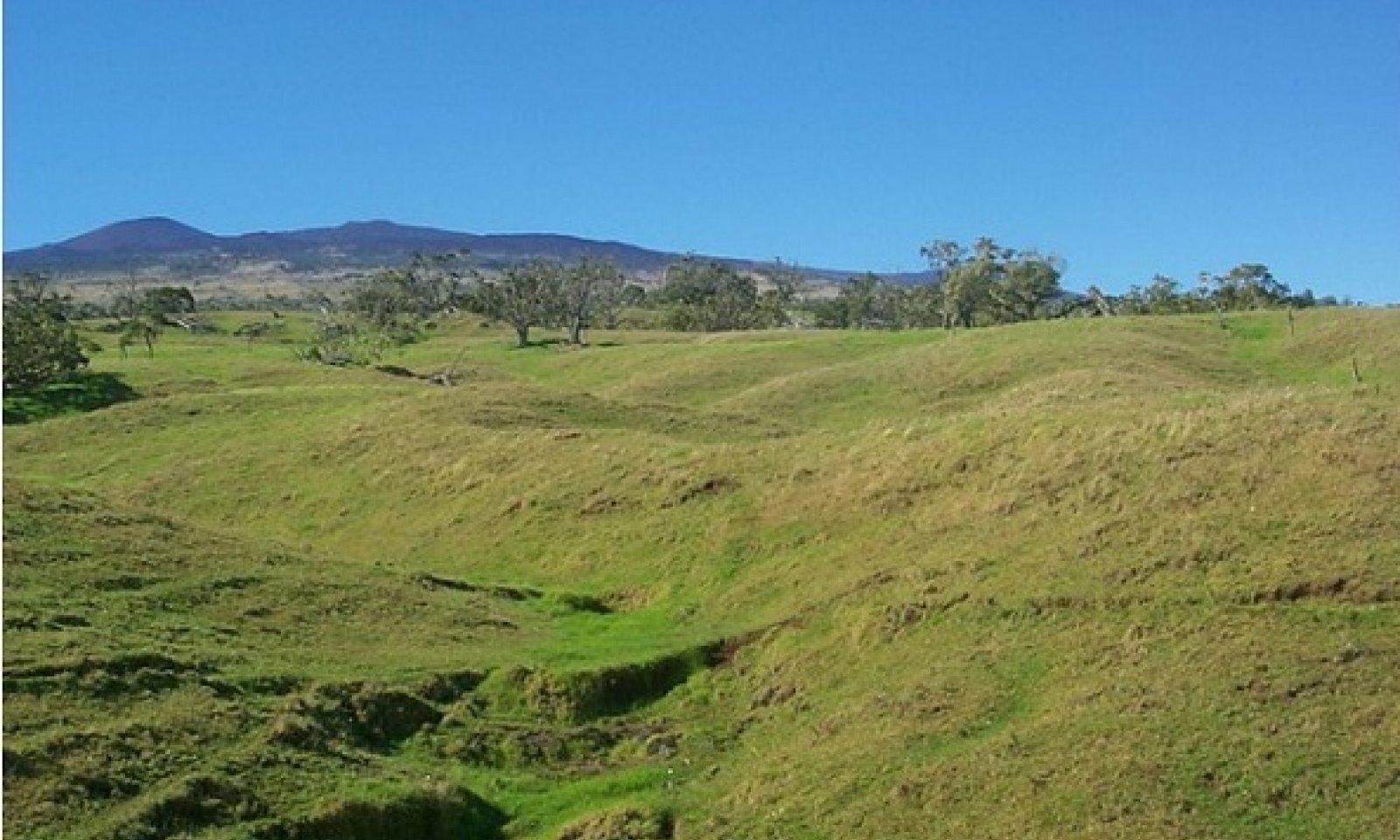




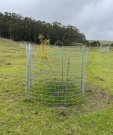


Description
This state is comprised of three community phases. They are naturalized grasslands that may have an open canopy of remnant native trees. Trees in these pastures provide shade and protection from the elements to livestock. Where shade is dense, the growth of a weedy cool-season grass species can be favored. Very little tree regeneration occurs, so trees eventually die out.
Community phase 2.1 is dominated by warm-season (C4) kikuyugrass (Pennisetum clandestinum) with a small admixture of cool-season (C3) forage grasses. C3 forage grasses increase with increasing elevation and decreasing grazing pressure. Cool-season meadow ricegrass, a less desirable forage species, may be abundant in shady areas under trees. Continuous grazing that does not allow favored forage species time to recover from defoliation results in community phase 2.2, which is dominated by lower value forage species but contains enough desired forage grasses to change back to 2.1 with prescribed grazing. Further continuous grazing leads to community phase 2.3, which is dominated by undesirable grass species and weedy forbs.
Submodel
State 3
Restored Koa State
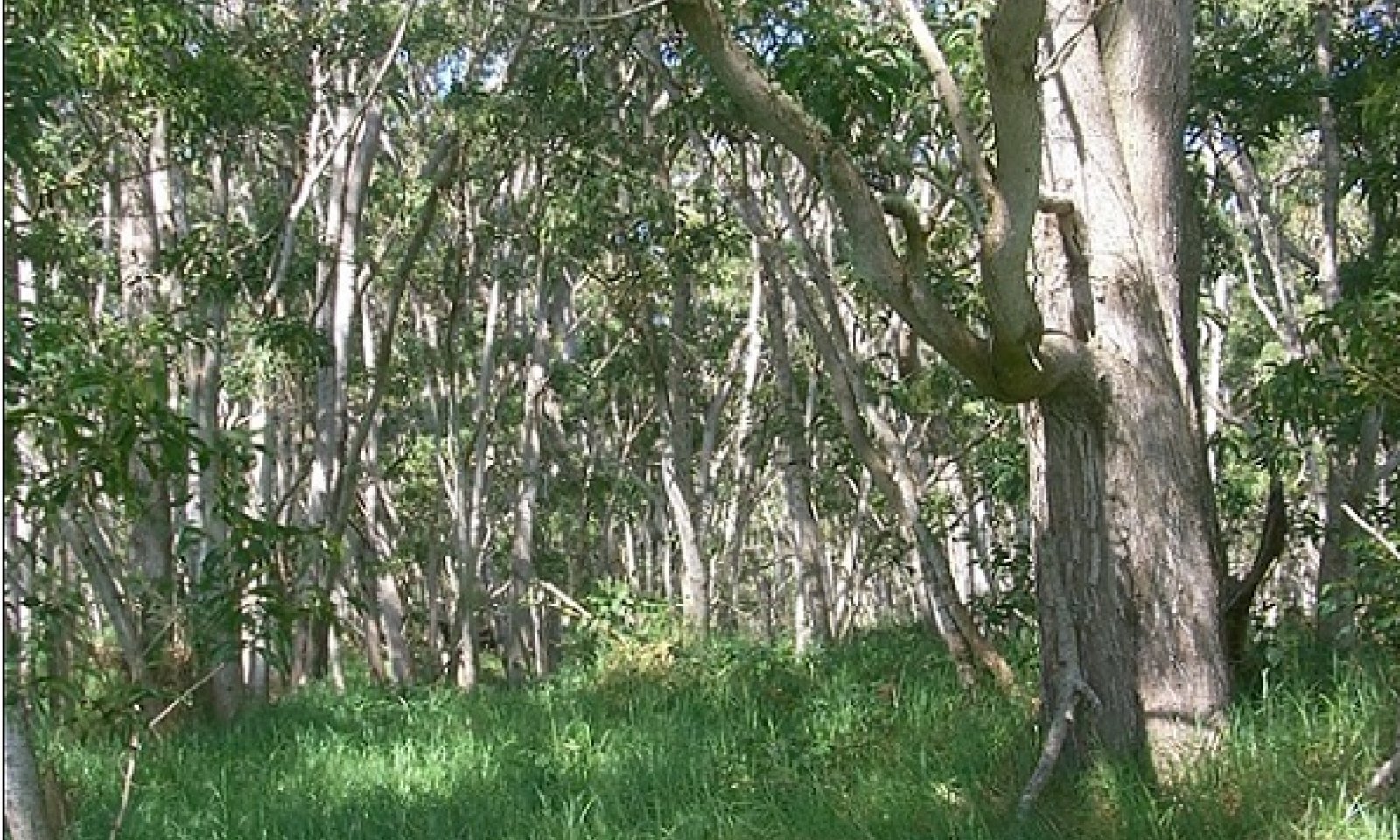




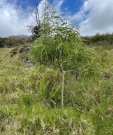
Description
This state has one plant community consisting of a dense stand of small to medium stature koa (Acacia koa) trees that have resprouted from the soil seed bank or been planted in grassland. There may or may not be large remnant native trees present. This state may be intended for eventual harvest, an intermediate step to restoration to the Reference State, or for silvopasture.
Submodel
State 4
Introduced Tree/Shrub-Invaded State
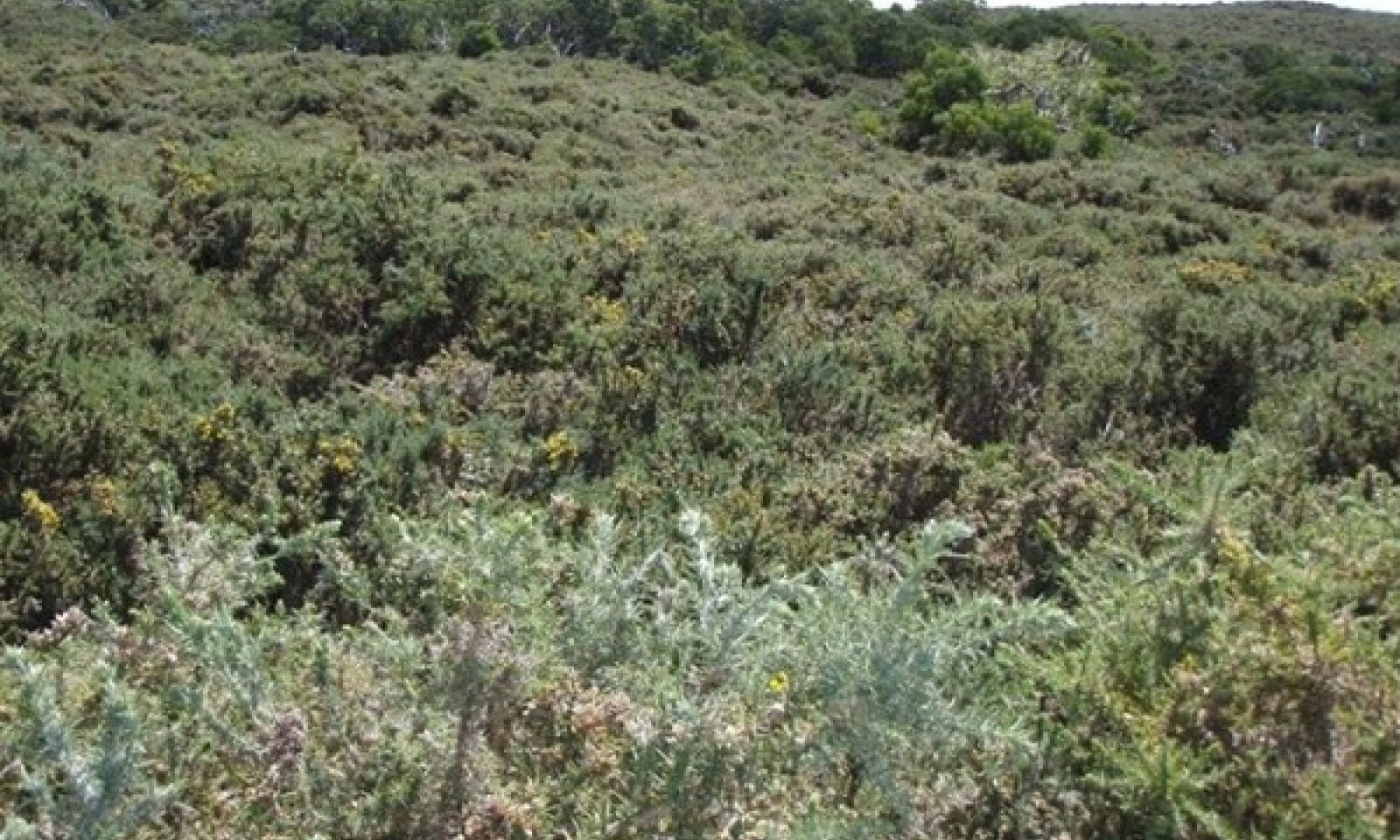




Description
This state has one community dominated by either an invasive tree or an invasive shrub.
Black wattle (Acacia mearnsii), is an extremely fast-growing tree currently choking pastures, gulches, and empty lots across 3,000 acres upcountry on Maui.
Faya tree (Morella faya) is another problematic introduced tree which is capable of forming dense, single-species stands, devoid of other plant life.
Gorse (Ulex europaeus) is a invasive shrub which was introduced intentionally to this ecological site early in the 20th century to function as a living fence livestock. It has since expanded its range and density considerably and now forms a monoculture on large acreages, primarily on Mauna Kea.
Submodel
Mechanism
State 1 Reference will transition to State 2 Naturalized Grassland by removing the native understory, either by fire, machinery, or, more gradually, by continuous disturbance by ungulates. Naturalized forage grasses may recruit voluntarily, or be established by sprigging or seeding.
Mechanism
A facsimile of State 1 Reference may be restored directly from State 2 Naturalized Grassland. Weed control must be applied to grassland species and the many opportunistic plant species that invade the site. Weed control will be a perpetual process to maintain the site even after a canopy of native trees and shrubs has developed. All ungulates must be excluded from the restoration site by fences and hunting. Domestic ungulates would be useful to manage vegetation outside the restoration site perimeter. Extensive planting of native species would follow. Koa is the key species for restoration. It can be replanted, and in some cases it can be restored by scarifying the soil with heavy equipment if a sufficient seed bank remains in the soil.
As an overstory canopy develops, the increased shade will cause a shift from warm-season kikuyugrass to cool-season, shade-tolerant meadow ricegrass (Microlaena stipoides). Meadow ricegrass can be almost as dense and detrimental to establishment of native plants as kikuyugrass. It may be possible to partially suppress meadow ricegrass by planting native shrubs that produce denser shade near the ground and litter that covers the grass, although herbicides will be more effective.
Mechanism
State 2 Naturalized Grassland can be restored to State 3 Restored Koa either with the goal of creating stands of harvestable koa, creating a silvopastures, or as an intermediate step to State 1 Reference State. Koa trees can rapidly form a dense stand on these sites from seed bank germination stimulated by mechanical ground scarification, root suckering from remnant koa, and/or replanting. Weed control of unwanted vegetation, including forage grasses, is necessary to reduce competition with tree seedlings. Ungulates must be excluded for at least five to seven years to allow koa saplings to grow large enough to withstand the presence of animals.
Mechanism
Gorse (Ulex europaeus) and/or black waddle (Acacia mearnsii) rapidly invades pastures when a seed source is nearby and eventually forms impenetrable thickets with very little understory. Inspection of grasslands for gorse and/or black waddle seedlings, followed by weed control is necessary to prevent this.
Mechanism
State 3 Restored Koa can be restored to State 1 Reference. Weed control will be necessary to eliminate banana poka and other weeds that invade the site, as well as to reduce grass cover. Ungulates must be excluded from the site. Reintroduction of native understory plants is likely be necessary. Very dense stands of koa will benefit from thinning.
Restoration pathway R4A


Mechanism
It may be possible to restore state 4 Introduced Tree/Shrub-Invaded to State 2 Naturalized Grassland. Multiple weed control treatments are required followed by the removal of dead gorse and/or black waddle. The reestablishment of forage grasses may be necessary. However, gorse and/or black waddle seeds can persist and remain viable in the soil for decades, making continual control necessary.
Model keys
Briefcase
Add ecological sites and Major Land Resource Areas to your briefcase by clicking on the briefcase (![]() ) icon wherever it occurs. Drag and drop items to reorder. Cookies are used to store briefcase items between browsing sessions. Because of this, the number of items that can be added to your briefcase is limited, and briefcase items added on one device and browser cannot be accessed from another device or browser. Users who do not wish to place cookies on their devices should not use the briefcase tool. Briefcase cookies serve no other purpose than described here and are deleted whenever browsing history is cleared.
) icon wherever it occurs. Drag and drop items to reorder. Cookies are used to store briefcase items between browsing sessions. Because of this, the number of items that can be added to your briefcase is limited, and briefcase items added on one device and browser cannot be accessed from another device or browser. Users who do not wish to place cookies on their devices should not use the briefcase tool. Briefcase cookies serve no other purpose than described here and are deleted whenever browsing history is cleared.
Ecological sites
Major Land Resource Areas
The Ecosystem Dynamics Interpretive Tool is an information system framework developed by the USDA-ARS Jornada Experimental Range, USDA Natural Resources Conservation Service, and New Mexico State University.

